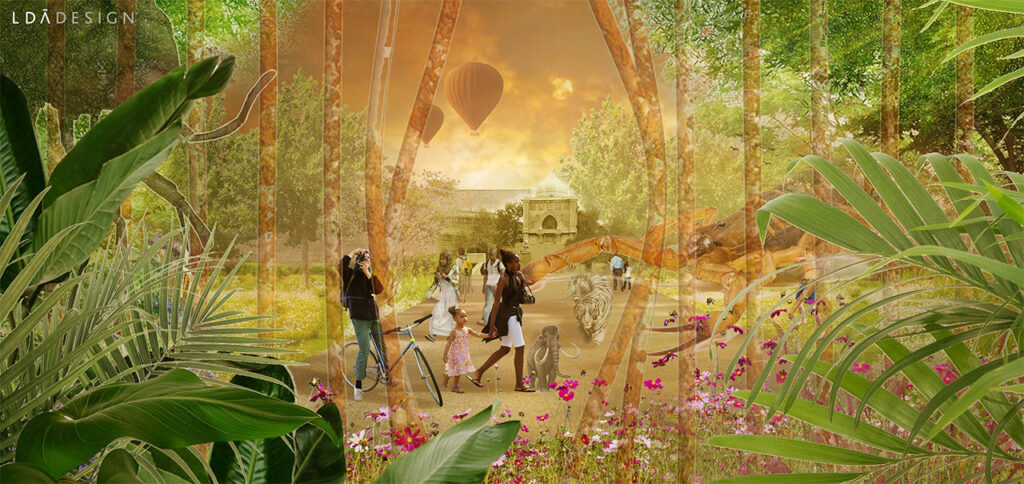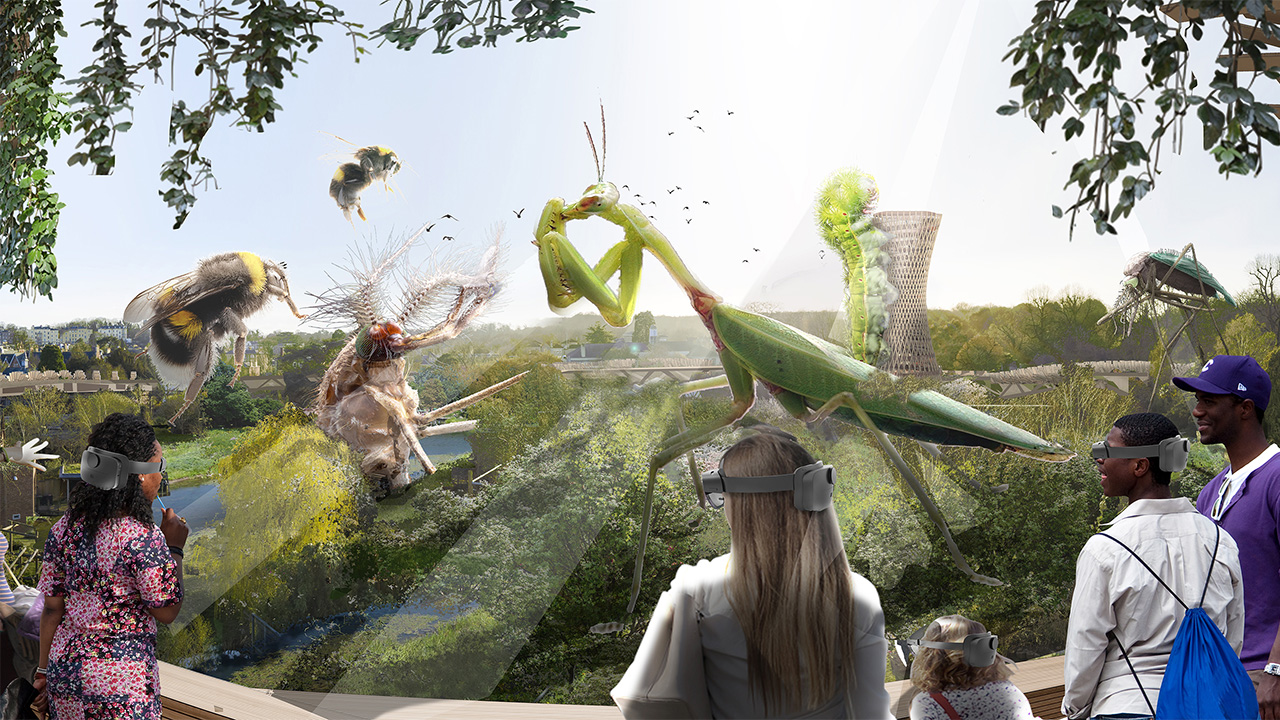As the world creeps tentatively back to life post-pandemic, audiences may be clamoring for IRL experiences, but as institutional responsibility for social justice issues remains front and center in the public consciousness, the ethics of viewership weigh heavily on the programming choices of cultural venues across the globe.
This dynamic is particularly relevant to the zoo sector, where the demands of environmental cognizance can often grate against traditional entertainment appetites. Still, zoos are the greatest funder of conservation practices in Europe, the UK, and North America; their worldwide struggles with food shortages and staff layoffs over lockdown were offset by online engagement, but still required government to survive.
So when the Bristol Zoological Society in the UK announced in November 2020 that they were closing their Clifton site in Bristol, a group formed to develop a plan for its future use. This culminated last month in the launch of a prospectus describing the world’s first-ever augmented reality (AR) zoo. Visitors were all-ears and, come 2024, they’ll be all-eyes too.

Using AR and other AV technologies, the project aims to develop an experience that deeply examines mankind’s relationship with the natural world. Image: OurWorld Bristol
The Bristol Zoological Society, which first opened the Bristol Zoo back in 1836, making it the fifth oldest zoo on earth, will close in late 2022 after moving to a larger space and reopen as the Wild Place in 2024. The OurWorld prospectus reflects the collaborative work of a combination of academic, scientific, creative and business minds. David Bull, Director of the Bristol Vision Institute and lead of the related MyWorld Southwest UK creative hub, is a key player in the planning process for this new zoological endeavor.
“The idea is that this is a center that entertains people, but also raises awareness on a global scale,” says Bull in conversation with Jing Culture & Commerce. With AR technology injected into the concept of a zoo, “it’s not just looking at animals in cages; it’s not voyeuristic. We’re trying to create something where people are engaged and can truly understand the impact that humans have on ecosystems.”

Bending not just place, but time, the campaign enables visitors to travel from prehistory into a vision of the distant future. Image: OurWorld Bristol
Forgoing captive animals for a fully immersive AR experience superimposed on outdoor space (“very, very challenging to do, by the way,” notes Bull), the OurWorld campaign not only bends place, but time, enabling visitors to travel back millions of years and experience all manner of fauna, dinosaurs included, roaming around their natural Bristol habitat. “We have a tendency to anthropomorphize everything and romanticize our relationship with wildlife, but using scale and immersion, we can create a confronting, exciting form of entertainment that also educates people,” Bull adds. “We can create that discomfort.”
The key, he states, is model perturbation. “If, for instance, you set up a model of an ecosystem and allow viewers to remove, say, honey bees from that ecosystem, they can actually see what happens to the environment over time. They’ll be more aware of what that might look like.”
From a technological angle, OurWorld’s AR zoo represents immense ambition. According to Bull, “What we’re doing is mixed reality, really. We’re superimposing imagery, we’re allowing viewers to remove buildings, layers, move forward and back in time. We’re building volumetric models based on image captures from existing environments.”
Bull also emphasizes OurWorld’s relevance to the city of Bristol itself. “Bristol’s not only a creative hub, the second largest outside of London in the UK, but it’s the ‘Green Hollywood’ — over 40 percent of natural history programs are filmed in Bristol because of the environment. Netflix even has a base here. So it makes sense that OurWorld would build on the region’s relationship with natural history.”



